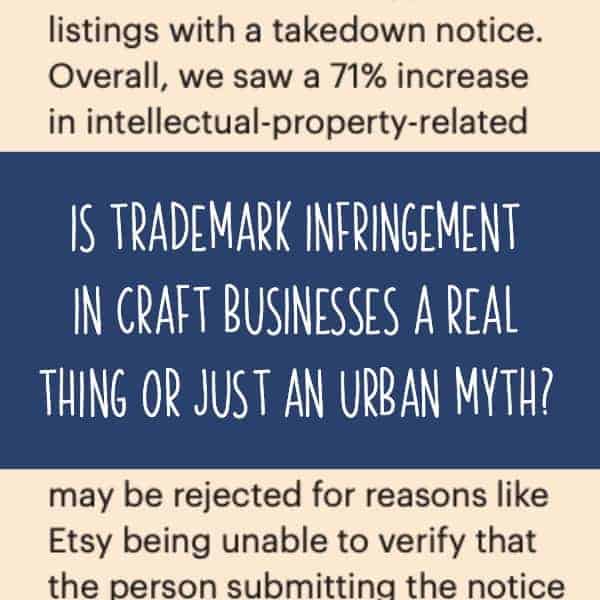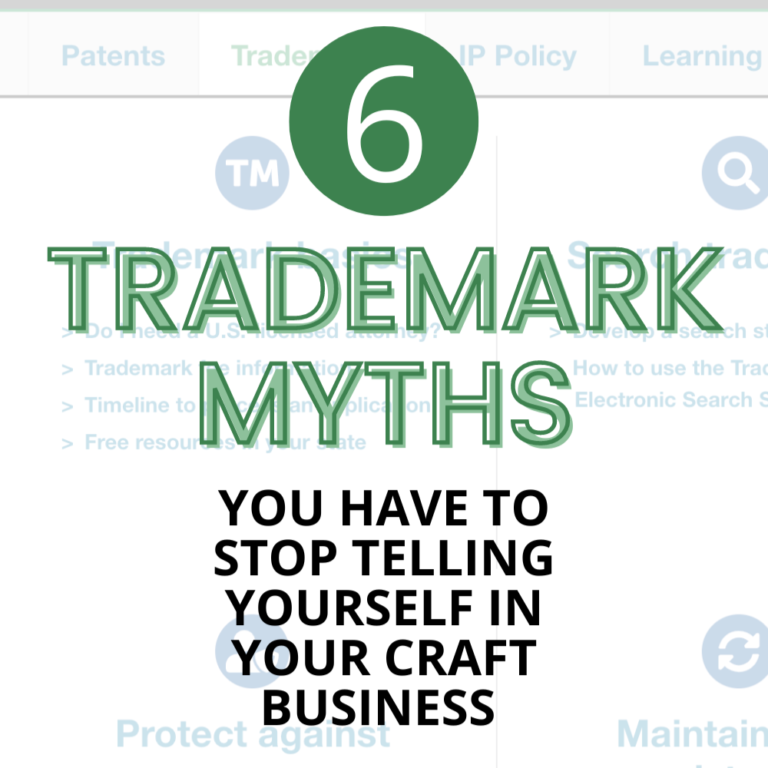Is it Worth it for Crafters to Trademark Something?
Affiliate Disclosure: As an Amazon Associate I earn from qualifying purchases. Additionally, I may get commissions for purchases made through other affiliate links in this post.
Some days it seems that every saying, phrase, word, and design is trademarked. It’s frustrating to me, and I know that it is also frustrating to you. Then, I see crafters talking about trademarking their own phrases and sayings. So today, I’m sharing my thoughts on trademarking – specifically: Is it worth it for a small business crafter to trademark something?
While deciding to trademark something is obviously a personal choice for each crafter and their business, in most cases, I don’t think it is worth it.
Let’s pretend you’ve hired an attorney to file your trademark, it has gone up for opposition and was not opposed, and you’ve got your shiny new trademark certificate in your hand. Now what?
What Happens After You Successfully Trademark Something?
- People don’t stop using it. Just because you trademark something doesn’t mean that others crafters and creators will stop using it. Instead, you need to police the internet. You’ll need to seek out people that are infringing on your trademark. And don’t forget, it’s not just Etsy. It’s Facebook, Instagram, private websites, Craigslist, anywhere that someone could possibly sell something.
- Why this is problematic for a small craft business: It’s time consuming. If you are constantly looking for trademark infringers; when will you create products, do marketing, accounting, and all the other things that come with running a small business?
- Send out cease and desist letters. In most cases if you find someone infringing on your trademark, you’d send them a cease and desist letter. This letter basically identifies you as the trademark owner and asks the infringer to stop.
- Why this is problematic for a small craft business: Cease and desist letters don’t really mean anything. Until you take legal action, it isn’t a guarantee that the infringer will stop.
- Take legal action. For trademark infringers that don’t respond to a cease and desist letter, you’d need to take them to court. Of course, this means attorney fees and court dates.
- Why this is problematic for a small craft business: It’s not only time consuming, but it is expensive.
- It’s never ending. Don’t think that this is a ‘one and done’ list of steps to take. The steps above would need to be taken daily or weekly to protect your trademark.
Unless you have unlimited funds to protect your trademark and a whole lot of spare time, it probably isn’t worth it to trademark a phrase or saying. If you would like to trademark something – consider trademarking your business name.
Was this post helpful? If so, save the image below to Pinterest and help out another crafter.

Since 2015, Christine Schinagl has been helping crafters start and run craft businesses through her blog, Cutting for Business. As a Silhouette and Cricut crafter herself, she has a unique take on what works and what doesn’t work in the craft business world. She also enjoys teaching other crafters how to create digital SVG designs, available through the Design with Me series.





